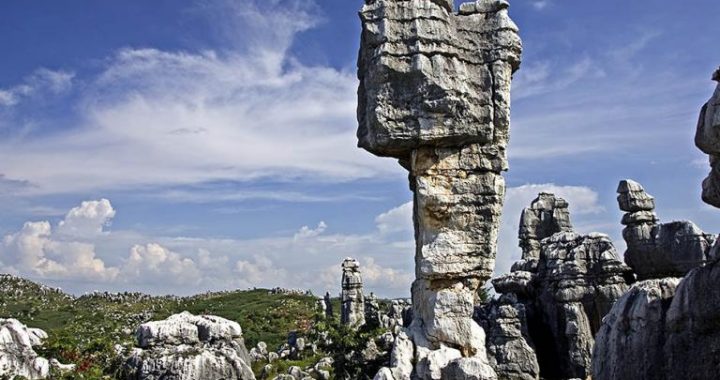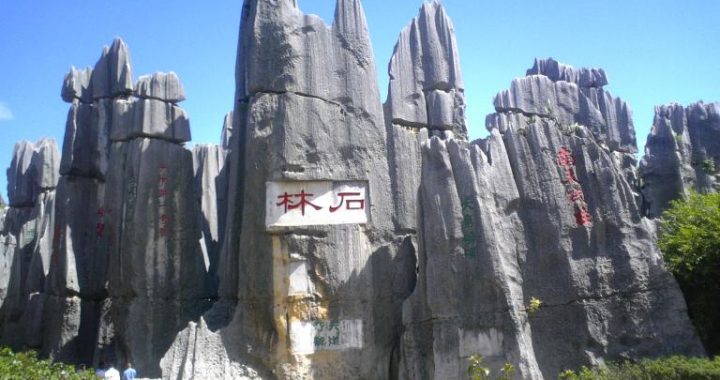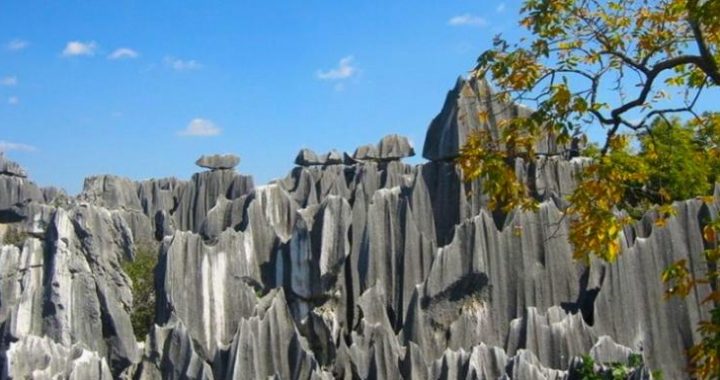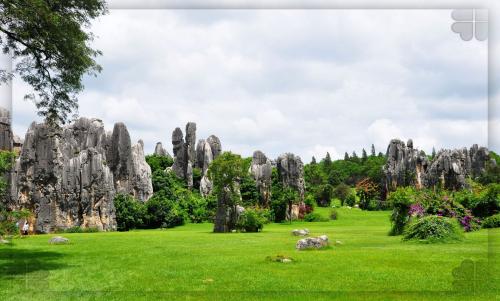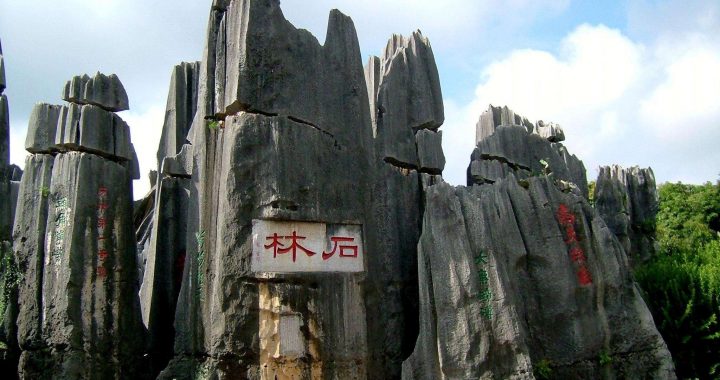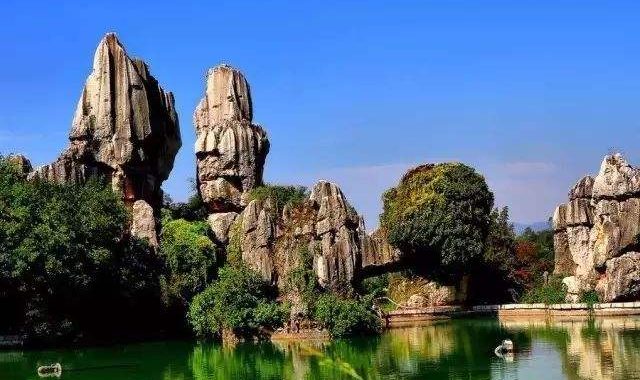Heritage:Stone Forest
5 min readThe“Spring City”is one of the most beautiful places in China,cradled in the foothills of the Himalayas and decorated with diverse flora and fauna-all wrapped up with a culturally rich history.
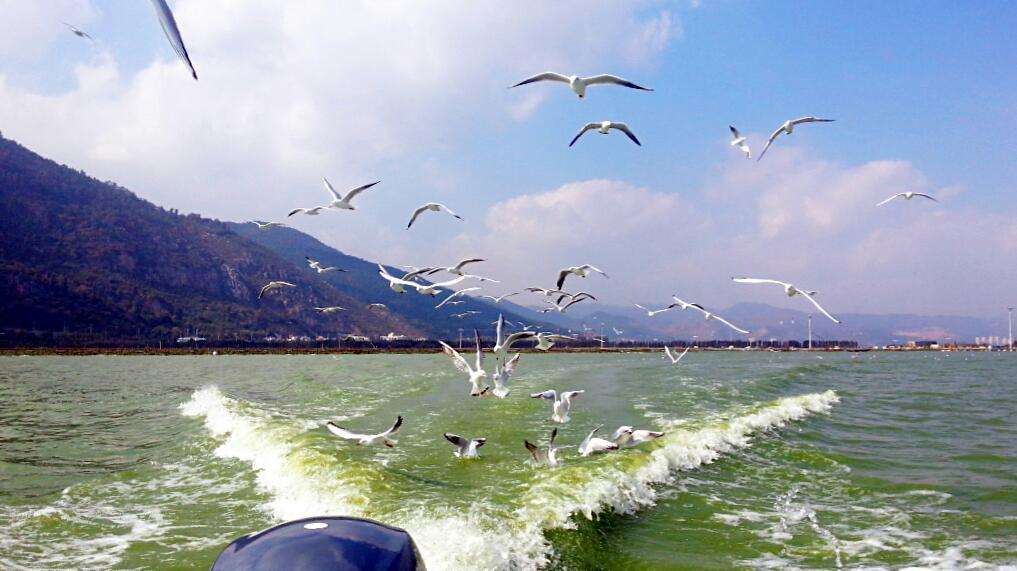
Marco Polo may have been the first Westerner to be captivated by Yunnan’s awesome natural beauty,cultural diversity and food.Wandering the city,one sees minority peoplesin embroidered garb selling fruit and a huge variety of beautiful tropical flowers frombaskets carried on bamboo poles slung across their shoulders,the towering mountains and clean fresh air contrast with a rapidly modernizing Chinese city bustling with large scale construction projects.
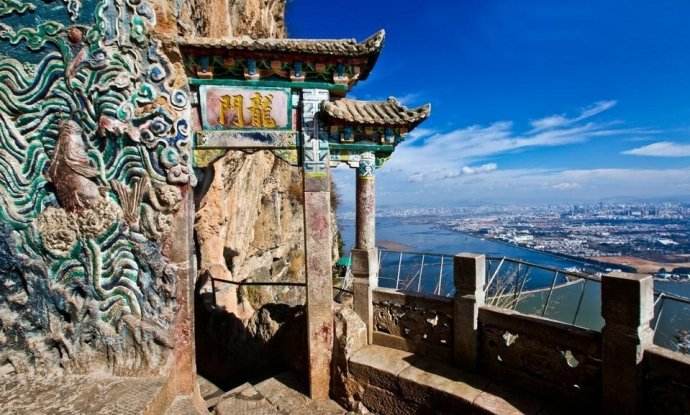
Kunming’s history goes back thousands of years.The city became known during the Ming dynasty because of Kunming’s ready supply of metals,the main source for Ming coins.
Although a large center of trade,the city nonetheless remained relatively isolated from the rest of China.In fact,it was considered a form of semi-banishment for imperial officials to be posted here.Upon the completion of the Indochina railroad in 1910,Kunmingrapidly opened up and became more accessible to the rest of the world,but still remains a nice contrast to the bustling chaos of other Chinese cities.Kunming is also a major exporter of flowers-it’s impossible for their presence to go unnoticed because their scent wafts through the streets.
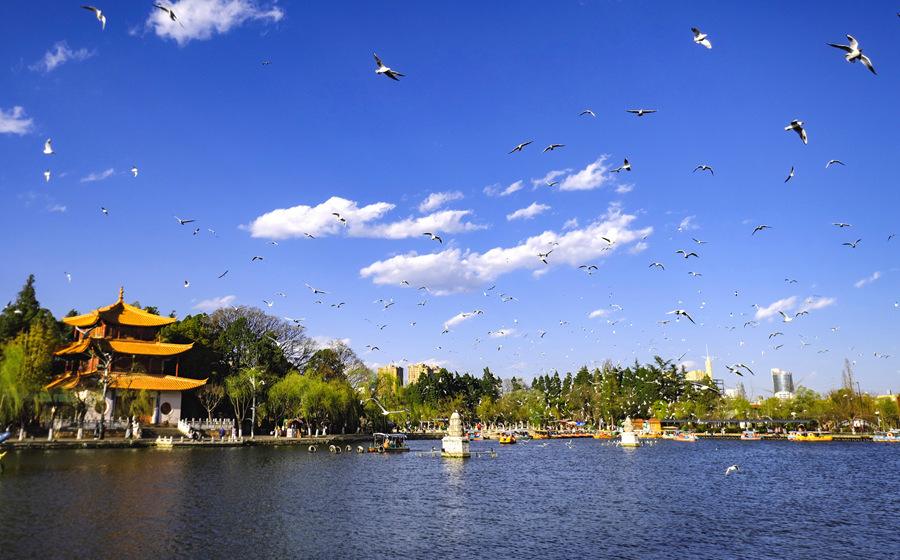
Nowadays Kunming is a jumping-off point for tourists to the western regions of Yunnan and Tibet.25 of China’s 55 ethnic minorities live in Yunnan,making up 30%of the province’s population.With mountains to the north,east and west,and located on a mile high plateau,the city’s temperate climate year-round serves to make it a great place to visit.

Dianchi Lake(dianchi)or the“Pearl of the Plateau”is situated to the south of the city.It’s the largest lake in Yunnan,and offers many things to do and see.West Mountain’s Dragon Gate(xishan longmen),known as”Sleeping Beauty,”has cliffs bordering the western side of the lake that are perfect for hiking.On the way to the top you’1l pass by both forgotten and refurbished temples,expansive vistas of the lake,gardens and the tomb of the musician Nie Er(nie’er mu),the composer of the Chinese national anthem.There’s a chairlift if you get too tired.More than a hike,this is a journey into China’s history.The notable Huating Temple(huating si),dates to the 1lth century and offers a quiet repose from the strains of hiking.Along the way,make sure to stop at the numerous view-points to soak in the beauty of the scenery:blue skies,green water with slow sailing fishing boats,the chirping of birds,and the grey peaks in the distance with the coastline dotted with fishing villages.
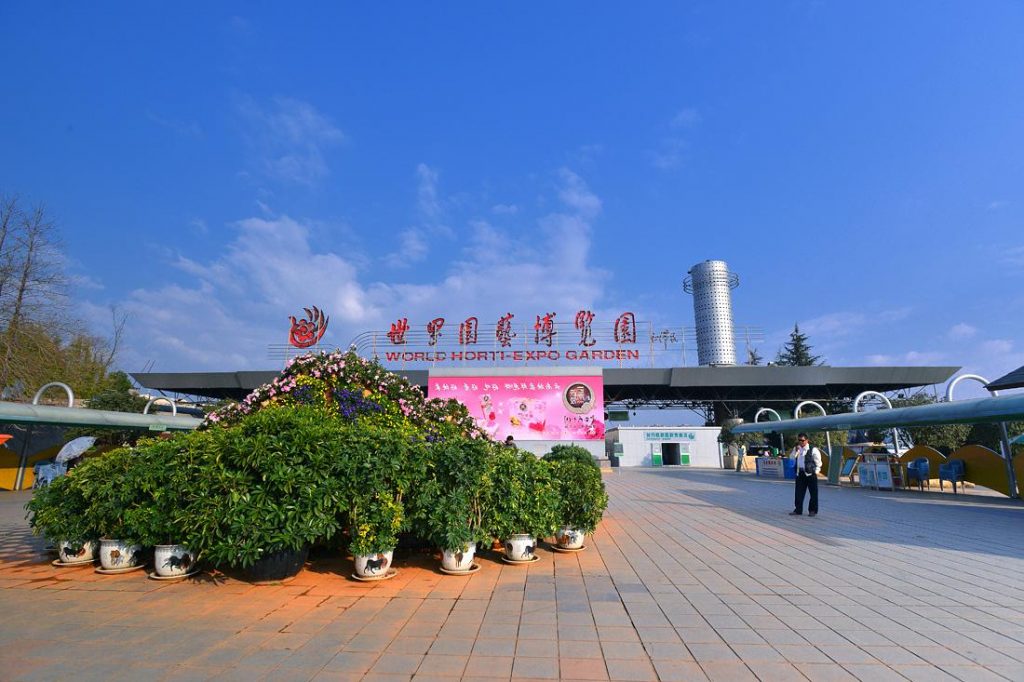
On the opposite side of the lake is Grand View Park(daguan gongyuan),which features a Buddhist temple and the Grand View Tower(daguan lou).From here you can rent a boat to West Mountain or just to tour the lake while the rower serenades you with traditional Naxi songs.
Set in a national forest preserve,the Golden Temple(jin dian)has the largest bronze temple in China.The 23-foot-high(6m)Taoist temple was built in 1671 after the original Ming temple was taken to Dali,but this one is not threatened by the same fate:weighing an estimated 250 tons,it sits on a marble foundation.
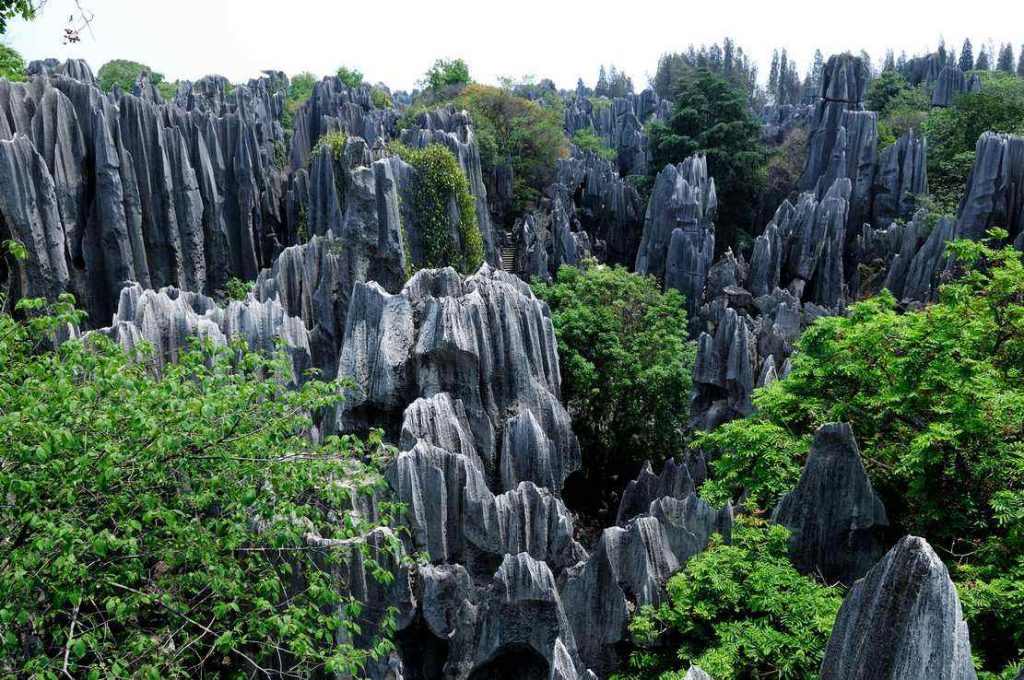
Kumming’s mild weather attracts migrating seagulls who spend their winters here.
Eating scoops of jackfruit,mango and pineapple flavored ice cream while strolling down Renmin Zhong Lu in downtown on a sunny Saturday.
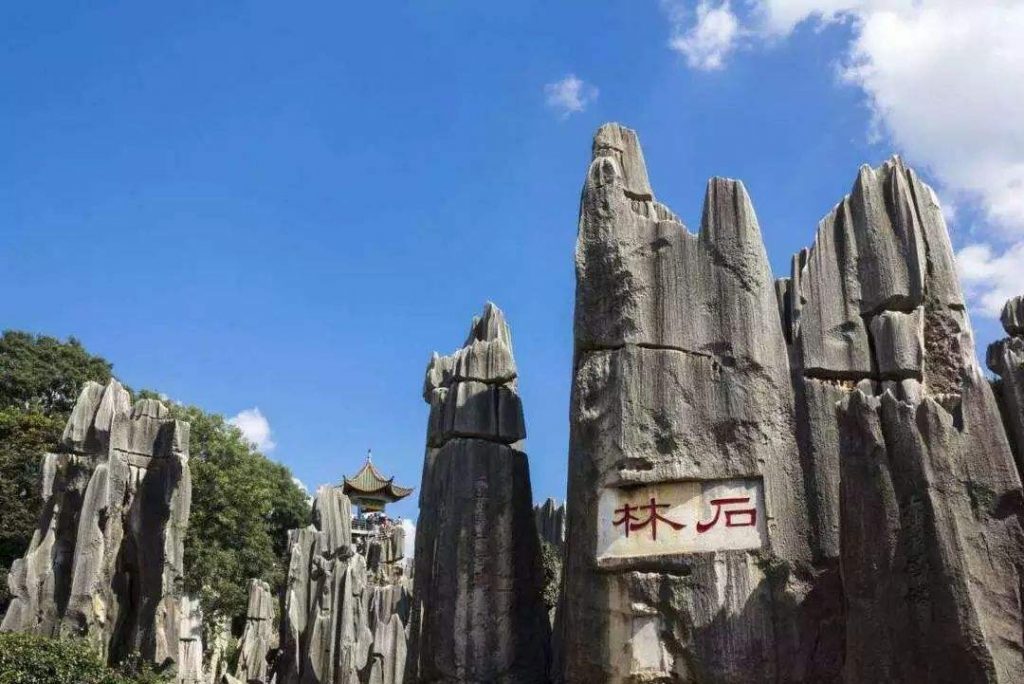
Strolling around Green Lake Park and shopping in the ethnic minority shops along the southern side Not far from the Golden Temple is the World Horticultural Exposition Garden(shi jie yuanyi bolanyuan),a major attraction for those with green thumbs.Flora and fauna are arranged in small gardens according to China’s provinces and 34 different countries.
One can’t help but feel awed by the Stone Forest(shilin),a natural wonder 51 miles(83 km)southeast of Kunming.Spending the day there is a perfect way to see some of Yunnan’s amazingly stark landscape.This place is breathtaking-a lake,caves,gorgeous vistas of the surrounding countryside and stone formations projecting from the ground provide the feeling of being in a primeval forest.Joining a tour is worthwhile as itprovides historical and cultural context to the natural beauty of the place-just ge there early be sure to find a group with an English-speaking guide.There are numerousdifferent areas where one can see the rock formations,including Long Lake(changhu)which has underwater stalactites and an island in the middle.

The forests come in all sizes,large and small,but some of the more interesting ones are the Major Stone Forest(da shilin),Minor Stone Forest(xiao shilin)and Naigu Stone Forest(naigu shilin).The stone formations are imaginatively likened to all kinds of animals,plants,people and other earthly creations.The stalactite studdec Zhiyun Cave(zhiyun dong)offers an underground version of the stone forests.
Although not providing the same contrast of the sky against the stone,its containment within a cave gives it a surreal,awe-inspiring feeling.This bizarre natural wonder formed around 270 million years ago when the area was underwater.The movements of the earth’s plates caused the limestone formations to rise then rain gradually wore down the limestone to make the peaks.There are many folk tales and customs surrounding the individual stone peaks-every year the Sani people gather here to celebrate the Torch Festival,which involves traditional performances,wrestling,bullfighting and a ceremony where young men propose to women by moonlight.
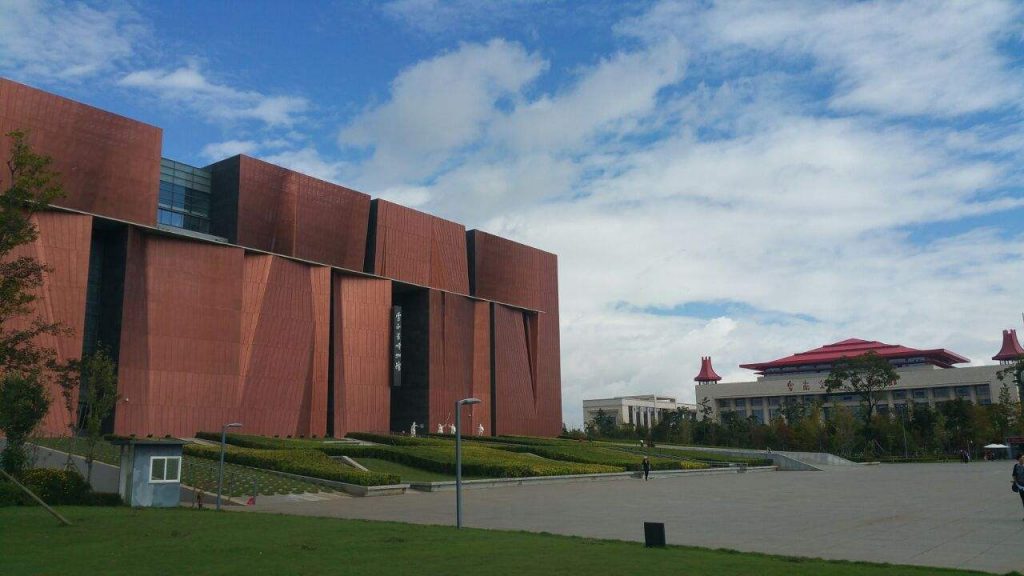
Adance fron the Yi ethnic group’s Torch Festival.huoba jie A legend surrounding Bamboo Temple(qiongzhuisi)stems from the surrounding bamboo forest:two brothers saw an unusual rhinoceros,which they followed deep into the forest where they spied odd monks performing an unknown ritual.When the monks saw the two brothers,they vanished,leaving only their walking sticks as evidence that they had ever existed.The following day the sticks had magically grown into a bamboo forest.The brothers then built the temple there as a sign of piety.Dating to the Song dynasty,the temple was rebuilt in the 1880’s.The most noted feature of the temple is the 500 Buddhistarhats sculptures by Li Guangxiu.These sculptures are amazing,not just in their quantity,but also in the craftsmanship of each individual arhat.Taking seven years from concept to realization,each of these life-size sculptures is a reflection of the human personality and soul.The meticulous work that went into each is clearly visible in the sculptures’ faces,stances and expressions.For a low-key afternoon or evening in the city,spend some time in Green Lake Park(cuihugongyuan)in the university district,which is surrounded by teahouses anc shops selling minority clothes and other goods.This is a relaxing place to go fora leisurely strol1;get up early enough and you can watch,and participate,in early morning Tai Chi exercises.
Yunnan Provincial Museum(yinnansheng bowuguan)has three exhibits displaying ethnic clothes,bronze drums and Buddhist art.The museum provides a quiet and relaxed way to learn more about the city’s history and culture.
